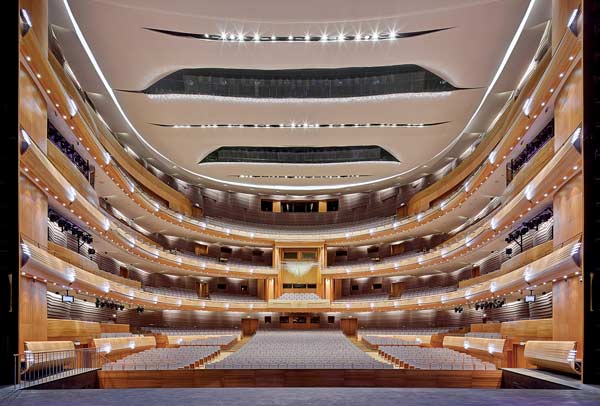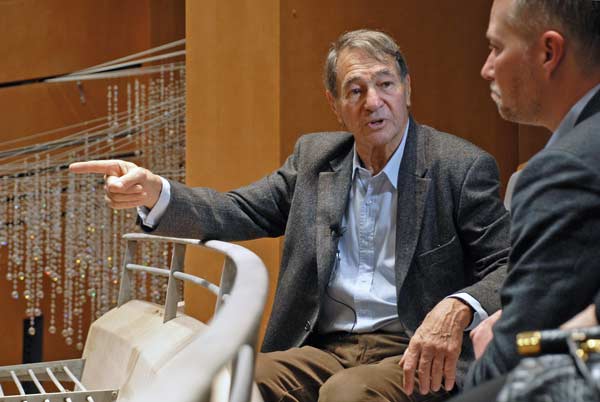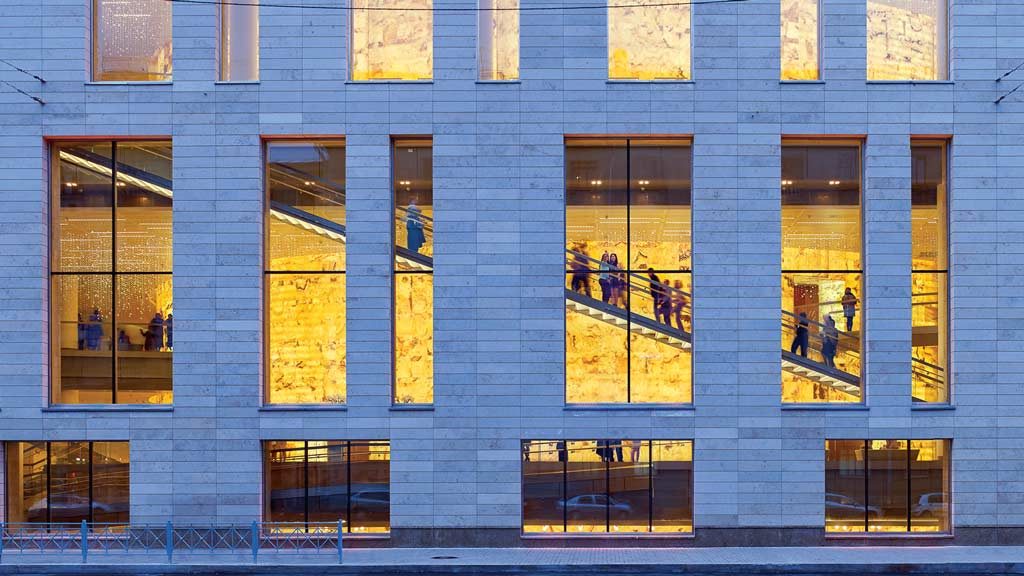Jack Diamond could easily spill the beans on the intrigue behind the scenes during the design and construction of the New Mariinsky concert hall in St. Petersburg, Russia a decade ago but it’s clear that for this master architect, some stories of incompetence, bungling and possible corruption among the host Russians must remain untold.
A sanitized version of the build’s truth is conveyed in the documentary film The Maestro and The Master: Building the New Mariinsky, presented as part of the Art, Architecture, Design Film Festival that ran in Toronto in late January. Diamond Schmitt Architects principal Gary McCluskie was scheduled to narrate a Q and A session after the doc was screened Jan. 25.
The 50-minute film, produced in 2013, follows Diamond, a team of Diamond Schmitt colleagues and various Russian collaborators during the three-year build of the New Mariinsky Theatre, up to its May 2, 2013 opening.
At one point in the film, Diamond bristles during a video conference with Russian joint venture partners. He comments he would have dropped the project were the building not so important.
“It was a lot more frustrating than the film depicts,” Diamond said in a recent interview.
He worked closely with Valery Gergiev, artistic director of the Mariinsky Theatre, friend of Russian President Vladimir Putin and iconoclastic project enabler, in dealing with the labyrinthine Russian bureaucracy.

The joint venture partners had never done anything of this kind, Diamond said, “but they had the contract. The battles with them continued until I told Valery, you better tell them who’s designing this, which he did. He was a staunch ally.”
Today the, 2,000-seat New Mariinsky, a companion to the legendary original Mariinsky Theatre, built in 1860, is considered one of the top three opera halls in the world. At one-million square feet it occupies a whole city block, featuring the main stage, a rehearsal stage and extensive backstage premises; rehearsal rooms for the various companies; chamber venues; premises in the foyer for hosting educational projects for young people; and even a rooftop amphitheatre.
Two earlier contest-winning designs were abandoned for being impractical before Diamond Schmitt beat out nine other competitors in a subsequent competition.
Nothing came easy for the Diamond Schmitt team. To Diamond’s alarm, the foundation for the building was already well underway, based on one of the earlier winning designs, and there was nothing Diamond could do to reverse it.
“The largest design achievement will never be seen,” he said of the challenge of integrating the underground works. “I adapted the foundation for a building that didn’t get built for one that did.”
Throughout construction, there was carping from various sources, especially online critics, on the design of the building. Everybody had an opinion on what was acknowledged to be the most important performance hall to be built in Russia in a century.

First, Diamond recounted, it was said the building looked like a bus station; later, it was a shopping mall.
Diamond explained the building had to be highly functional, fulfilling its purposes, and it had to fit into the existing St. Petersburg streetscape. St. Petersburg is one of the world’s most classically beautiful cities renowned for the continuity of its urban architecture, Diamond said, with conjoined five- or six-storey buildings featuring small vertical windows, though punctuated by onion-domed churches.
Diamond paraphrases an article by architecture critic Witold Rybczynski that captures how Canadian design has earned respect around the world.
“What he says is, if you want to have pyrotechnics, there are big-name architects around the world who will give you that,” he said. “Whether it’s sustainable pyrotechnics — it’s like a joke, you can’t tell it twice — is another question.”
Diamond said satisfying contradictory demands leads to the best results in his line of work.
“I wanted it to both have the aspect of continuity and also have it special as an opera house,” he explained. “The way I achieved that, the whole inner sanctum is lined with (yellow) onyx that’s backlit. From the street below, you see the three- of four-storey height of that wall. The facade is very consistent with the contemporary aspect of the street, with continuity, but within it, especially as you admire it through the winter season, you get this glowing kernel, inside the nut, and it makes a very different impression than an office building.”
The film concludes with clips of an appreciative audience watching and listening to a lengthy opening night show amidst sparling Swarovski crystal lights and the warmth of beech and oak. The former critics seem won over.
Russian architect Yuri Isadchenko has a final word.
“No one could imagine the beauty of the interior. It’s theatrical, wonderful, masterful, with great taste,” he said.











Recent Comments
comments for this post are closed